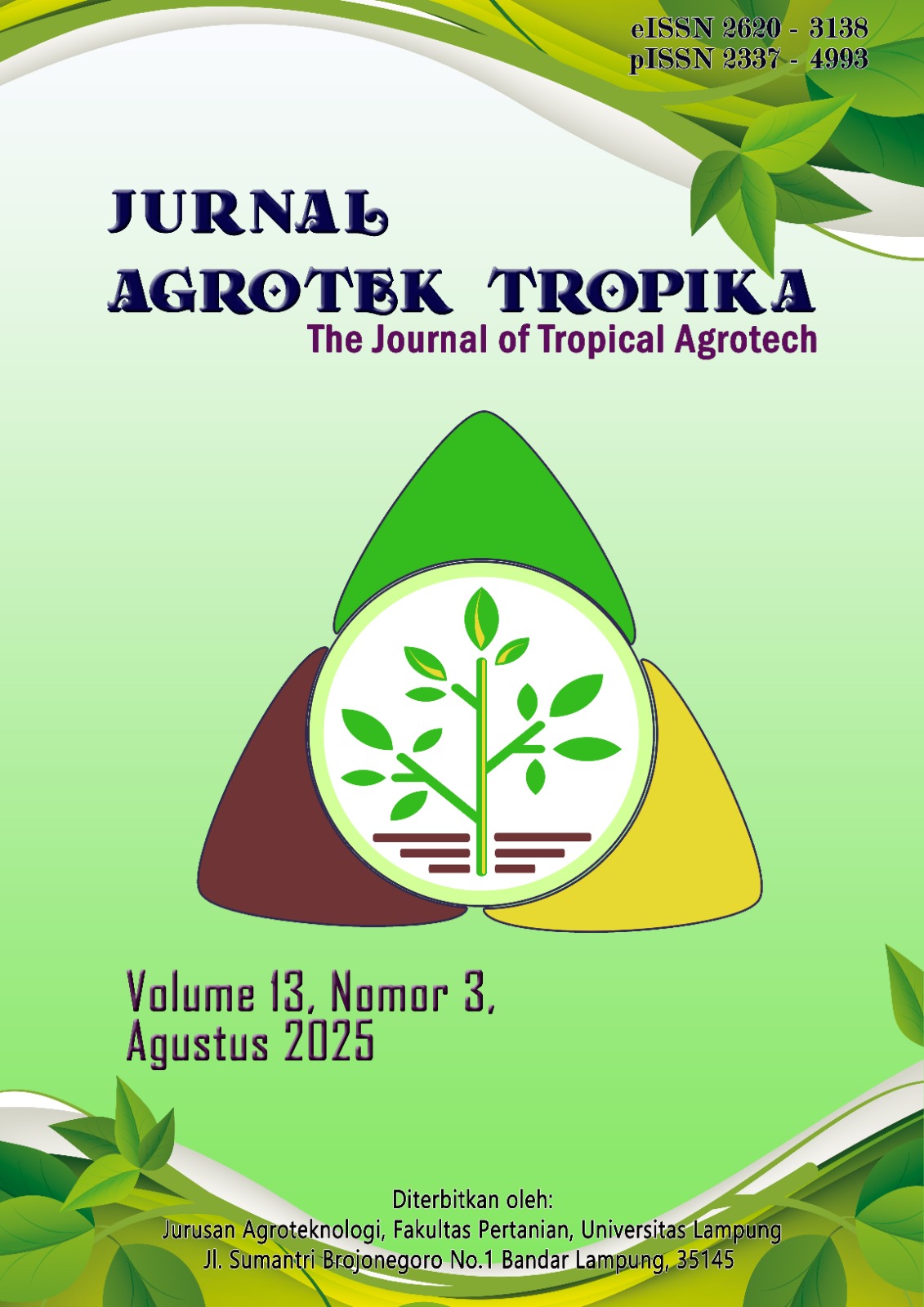MORPHOLOGICAL CHARACTERIZATION AND PHYTOCHEMICAL ANALYSIS OF RATNA FLOWER PLANT (Gomphrena globosa) PINK PHENOTYPE IN SIBANGGEDE AND PADANG GALAK AREAS
DOI:
https://doi.org/10.23960/jat.v13i3.9681 Abstract View: 228
Abstract View: 228
Keywords:
Bunga ratna, Karakterisasi, Morfologi, FitokimiaAbstract
The Ratna flower (Gomphrena globosa L.), commonly known as globe amaranth, is widely used as an ornamental plant, natural tea ingredient, food coloring, and traditional medicine due to its various health benefits. In Bali, this flower also holds important cultural value as an offering in ceremonies and sacred dances. Despite its diverse uses, studies on the morphological and phytochemical diversity of G. globosa accessions across different growing regions remain limited. This study aimed to characterize the morphological traits and analyze the phytochemical composition of pink-flowered Ratna accessions collected from two regions, Sibanggede and Padang Galak. The research was conducted from October to December 2023. Sampling areas were determined using an exploratory method with purposive sampling, and plant samples were collected using a simple random sampling approach. The findings revealed distinct morphological variations in leaf and stem surfaces between accessions from the two locations. Phytochemical analysis showed qualitative and quantitative differences in chemical composition. The Sibanggede accession contained major compounds such as phytol, ethyl ester, and hexadecanoic acid—known for their antioxidant, anticancer, and antibacterial properties. In contrast, the Padang Galak accession was dominated by compounds including 2(4H)-Benzofuranone and thiourea, which exhibit antiarthritic and anticancer activities. These morphological and phytochemical differences are likely influenced by environmental factors affecting plant development and secondary metabolite synthesis. Overall, this study provides baseline information for the cultivation and utilization of Ratna flower in pharmaceutical, cosmetic, and ethnobotanical applications.
Downloads
Downloads
Published
How to Cite
Issue
Section
License
Copyright (c) 2025 I Made Basma Redana

This work is licensed under a Creative Commons Attribution 4.0 International License.
Jurnal Agrotek Tropika (JAT) is licensed under a Creative Commons Attribution 4.0 International License.
The copyright holder is the author. Authors publishing under any license allowed by the journal retain the copyright and full publishing rights without restrictions.
The Creative Commons Attribution 4.0 International (CC BY 4.0) license allows users to copy, distribute, and adapt the work, even for commercial purposes, as long as proper attribution is given to the original creator. This is a highly flexible license that encourages widespread dissemination and use of creative works, supporting innovation and collaboration across various fields.











